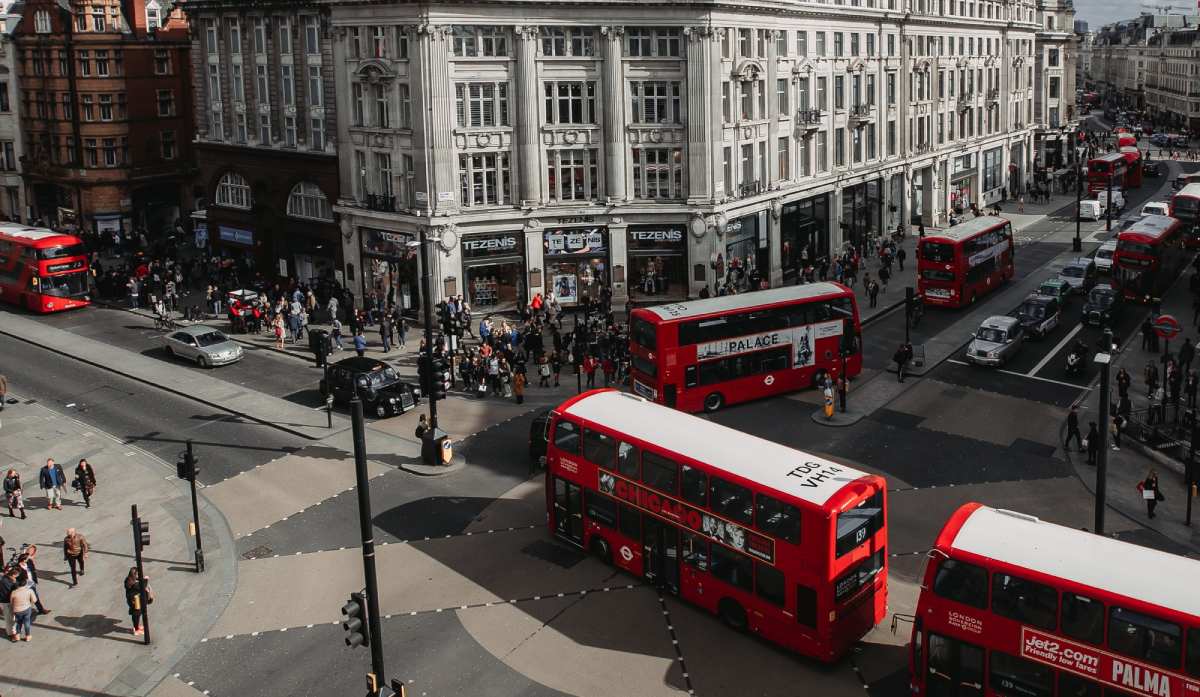The fashion industry has radically changed over the last two decades, and there’s no doubt that fast fashion has spearheaded this transformation.
What we see on the catwalk one day, can be in our wardrobe a few weeks later. This is the epitome of fast fashion, a seamless transition of garments through design, production, to the shop floor, and into your wardrobe. With an emphasis on rapid turn around, low prices, and a general disregard for quality. This is what’s really changed.
Whilst there are socio-economic arguments (for the western world) in favour of fast fashion, these pale into insignificance compared with the humanitarian and environmental costs.

Fast Fashion In Numbers
Since the year 2000 clothing production has approximately doubled. That’s 100% more clothing, whilst the global population has increased by just 27%. We each own more clothes than ever before, and sadly most of this surplus is carelessly thrown away, with 85% of wasted textiles ending up in landfill each year. A volume big enough to fill Sydney harbour.
Based on current trends, it’s estimated that fashion production will make up 26% of global carbon emissions by 2050. Meanwhile textile dying alone already accounts for 20% of global waste water, making it the world’s second largest water polluter.
At a human level it’s difficult to connect our behaviour as consumers with these devastating environmental consequences. But they are very real indeed, and it’s vital that we begin to acknowledge our role.
There is no doubt that fast fashion is largely responsible for the rampant growth, and wasteful culture of the modern fashion industry. The reality is that cheap clothes were never meant to last, with some major chains even producing garments that are ‘designed’ to be worn less than 10 times, and almost 25% of young people claiming to have thrown away an outfit after just one use.
It goes without saying that we are producing, buying, and throwing away exponentially more clothes than we need. We are hooked on the consumption of fashion.

The Psychology of Fast Fashion
So, how has fast fashion got its claws wrapped around us, why do we ‘need’ so much of what they produce?
Although it’s tempting to just point the finger at the big bad brands, this alone doesn’t penetrate to the heart of the question. To do this we have to begin with us, the consumer.
At some level, we all strive to show who we are through what we wear. The consumption of fashion, as a product we put on show constantly, is inextricably linked to our desire to create identity and convey meaning about ourselves. Therefore fashion, as a form of self expression, connects with a fundamental part of the human psyche.
Whilst this freedom to show our identity has positive connotations, it’s not always as liberating as it might sound. Fashion is, after all, something we follow. New trends arise, and we change to fit in. Like a series of new social norms that direct our self expression within predetermined limits.
Although trends are numerous, and sometimes outrageous or exuberant, they also provide a type of social safety net, enabling us to recognise ourselves as part of a larger group. And there is nothing intrinsically wrong with this, it fits neatly into our human nature.
But, there’s a question we almost all ignore; what or who exactly are we trying to fit in with, who makes the rules, who dictates fashion?
In a way the answer lies again with us, and specifically our aspirations set against the socio-economic structures in which we live. As far back as 1957 it was noticed that it is the ‘elites of society’ who initiate fashion, and then the masses who copy it in an attempt to bridge external distinctions of class, wealth and status.
In other words we aspire to copy the people we see as more significant than ourselves, and our clothes offer the perfect medium to do so. Then of course, as soon as a trend becomes too common it is abandoned for something new, something else we don’t yet have. This might seem obvious, but it’s important to remember that collectively we all take part in this process, albeit some more consciously than others.

Wanting more than ever before
Of course it’s not 1957 anymore, but it turns out we think about fashion in exactly the same way. Except nowadays we have many thousands more inputs to drive our desires. Everything from online advertising, to social networks, influencer marketing, celebrity culture, product placement. It’s all around us, and it’s designed to leave us wanting more.
Of course, we as the consumer create the demand. So one could argue that fast fashion is a natural phenomenon, the industry’s response to our rampant desire to have new things immediately.
However, fast fashion doesn’t just follow demand it creates it too. The traditional four season template has morphed into 52 micro seasons. Zara alone releases more than 20 collections per year, and online retailers such as Missguided boast about introducing more than 1000 new products each month.
The more they produce, the more we buy. We are stuck in a loop where we can never keep up. It’s their job to keep moving the goalposts, so we feel a constant ‘need’ for more. And at those prices you’ll probably take two, for posterity’s sake.
At a more sinister level fast fashion brands are playing a game, especially with younger generations, making them feel that they cannot stop buying if they really want to fit in. There is no doubt that a certain maintenance of insecurity about our image helps them sell us more. And it goes without saying that the circus of social media, especially instagram, makes it all too easy for brands to maintain a presence in our lives, keeping us in their pocket.
So you can see where our environmental problem begins. Fast fashion maintains a vicious cycle with the consumer, selling us the objects of our desire, whilst continuously changing that object at their whim. There is always that next purchase. And what’s more, with the sector making estimated profits of 3 trillion per year, and projected to grow a further ~60% by 2030, the financial incentives for them to scale back are non-existent.
Our undeniable hypocrisy
To extricate ourselves from this system, we all need to step out of this cycle and take a look at the bigger picture. At some point, we have all done it. Needed a new t-shirt for that holiday, popped into the nearest fast fashion store and bingo, we found just what we had in mind. It was quick, cheap, and not so regrettable.
Only the most saintly (and well off) have never had a similar experience, and the majority will probably do it again, even after reading all these articles about the catastrophic effects of fast fashion (this is not a first).
Although discussions around ethical consumption have increased dramatically over the last 10 years, with a genuine shift towards sustainable practices in many industries, research still suggests that even consumers with the strongest ethical convictions frequently fail to translate this into action.
Unfortunately in modern society we often feel, rightly or wrongly, that an anti consumption stance is not culturally or politically feasible, and as such we fail to properly define our own ethical parameters. Even when we seek out genuine ethical clothing, our amplified desire to be ‘in fashion’ still increases waste and disposal of things we deem ‘unfashionable’ after only limited use.

Leaving Fast Fashion Behind - What Needs To Change
If we helped create fast fashion as it is today, we can also help change it for the future. Ultimately, the heart of the problem lies with us, and our way of thinking. It turns out that our relationship with fashion is not healthy, for us or the planet.
Us, the consumer
Fashion has always been something that we ‘follow’, as if we are at the mercy of an aesthetic movement. The phrase ‘fashion victim’ sums it up nicely, suggesting that control has been somehow relinquished to a higher power.
At a human level, if our clothes form an integral part of self expression, then shouldn’t that image be dictated by our own aesthetic view, not just that of an industry whose primary interest is to keep us buying. After all, a culture of following and copying often leaves less space for originality.
Taking control of our image is not something we are often taught. And neither do we easily recognise the more sinister practices of fast fashion. The more we are taught to freely express ourselves, the less we feel the need to follow anything, be it a company or a new trend, in order to fit in.
This topic of personal identity warrants a whole separate article and is way beyond our remit, but a cultural shift in how we view ourselves is an important part of changing how we buy clothes. Whist we could wait for brands to lead us to be more conscientious and sustainable, this could be some time coming. So, as with any environmental issue, we have to control the one thing we can, ourselves.
Go slow
To align our way of thinking with the best interests of the environment, we have to think differently. At one level it’s a psychological challenge to defining one’s own style that is based squarely on our own identity, and that this stake in the ground takes precedent over the schizophrenic influences of the fashion world. Thereby providing a certain resistance to ever changing trends. From this stable footing, perhaps we can slow down and begin making conscientious decisions for both our image and the environment alike.
These principles are not designed to undermine fashion as a form of creativity, and inspiration - this quite rightly will always have its place. Neither are they meant in any way to inhibit self expression. By contrast, a ‘slow culture’ approach to fashion where we detach ourselves from established practices, and question the social and economic model underpinning the whole industry should, in fact, be ripe for innovation and original ideas.
The term Slow Fashion has been coined to describe a sustainable approach to fashion production and consumption, with a big focus on ‘valuing and knowing the objects’ that we buy. This means helping consumers to understand the production process from raw material to finished garment in an attempt to create a value system that goes beyond immediate gratification.
This doesn’t mean we can’t buy new things ever again, but it does encourage us to stop and think. When most people see hangers full of unbelievably cheap clothes, they don’t see an environmental problem. The truth is, we are almost totally disconnected from the production process of those clothes in the first place.
Education
There is still a huge void in people’s understanding of textile manufacturing. Just because something is made from a natural material, does not mean it’s sustainable. One cotton t-shirt alone requires approximately 2700 litres of water.
However, research does suggest that people who receive new understandable information about the environmental impact of their actions, are inclined to change their behaviour. Education is therefore crucial to creating real systemic change that starts at the consumer level.
Pragmatically, we shouldn’t just demonise fast fashion as this alone provides little support for real people looking to be more conscientious. We need to champion brands and organisations who are striving to change the industry, so that consumers always have a range of ethical clothing readily available to them. By growing the sustainable part of the fashion industry, we send a strong message to those who promote ultra fast consumerism and throw away culture.
We encourage people to think about their own relationship with fashion, question the norms of our culture, and try to support ethical practices in every way possible. Above all, stop and think before you make that next purchase - where does this come from, and do I really need it?
After all, “every time you spend money you are casting a vote for the kind of world that you want” - Anna Lappé














 Be the first to know when Europe's top ethical brands are on sale, sign up to our newsletter here
Be the first to know when Europe's top ethical brands are on sale, sign up to our newsletter here